TABLE OF CONTENTS
Substance Painter, or Substance 3D Painter if we were to follow Adobe’s novel naming schemes, is the crème de la crème of the world of 3D painting.
Used by amateurs and seasoned professionals alike, Substance Painter gives you the tools needed to easily paint and texture your 3D creations to perfection.
Originally created by the French software developer Allegorithmic, Substance Painter has since been acquired by the monolithic Adobe and has been incorporated into their suite of creative tools—as you can clearly see with the new and very unique logo that was created for it.

Old and new Substance Painter Logo
Substance Painter cuts down on needing to fiddle with complex shader trees and hours of tweaking shaders to properly texture anything by breaking it down into a relatively simple, intuitive, and most importantly, creative process.

Image-Credit: APEX, Marvel, Hitman
Think of literally any relatively complex 3D project—movies, shows, games, advertising, etc—and I can just about guarantee that Substance Painter will have been used at some point during the production pipeline.
And when considering all its great uses and how it’s been used to create some of the most gorgeous creations around, you’d think that it’d require some pretty high-end hardware to run it, right?
That’s true to an extent, but as with most things, it’s also more complicated than that.
So, in this article, I’ll go over what you need to know about what it takes to use Substance Painter.
Substance Painter Official System Requirements
Taken from Adobe’s official documentation, these are the latest system hardware requirements for Substance Painter as of version 7.4.1.
| Platform | Minimum | Recommended | Optimal |
|---|---|---|---|
| Windows | OS: Windows 10 (64bit, version 1909) CPU: Intel Core i3 AMD Ryzen 3 GPU: Nvidia Geforce GTX 1060 Nvidia Quadro M2000 AMD Radeon RX 580 VRAM: 4GB RAM: 8GB Hard Drive: 20GB HDD | OS: Windows 10 (64bit, version 1909) CPU: Intel Core i7 AMD Ryzen 7 GPU: Nvidia Geforce GTX 2080 Nvidia Quadro RTX 4000 AMD Radeon RX 6700 XT VRAM: 8GB RAM: 16GB Hard Drive: 30GB HDD | OS: Windows 10 (64bit, version 1909) CPU: Intel Core i9 AMD Ryzen 9 GPU: Nvidia Geforce RTX 3080 Nvidia Quadro RTX 6000 AMD Radeon RX 6800 XT VRAM: 16GB RAM: 32GB Hard Drive: 50GB HDD |
| macOS | OS: Mac OS 10.14 (Mojave) CPU: Intel Core i7 GPU: MD Radeon Pro 5300M RAM: 8GB Hard Drive: 10GB HDD | OS: Mac OS 11 (Big Sur) CPU: Intel Core i9 GPU: AMD Radeon Pro 5600M AMD Radeon Pro Vega 56 RAM: 16GB Hard Drive: 25GB HDD | OS: Mac OS 11 (Big Sur) CPU: Intel Xeon W9 GPU: AMD Radeon Pro W5700X RAM: 32GB Hard Drive: 50GB HDD |
| Linux | OS: CentOS 7.0 Ubuntu 18.04 (Steam only) | OS: CentOS 7.6 Ubuntu 20.04 (Steam only) | OS: CentOS 7.6 Ubuntu 20.04 (Steam only) |
Our Take On the Official Substance Painter System Requirements
It’s…actually not too bad. Considering how bad the system requirements that Unreal and Unity recommended were, these relatively well-detailed requirements are downright delightful.
Other than Linux users being told to fend for themselves of course, but at this point, they’re used to that I suppose.
But overall, it’s actually not too bad. Adobe even provides specific information covering certain workflows or processes and what you might require for them hardware-wise.
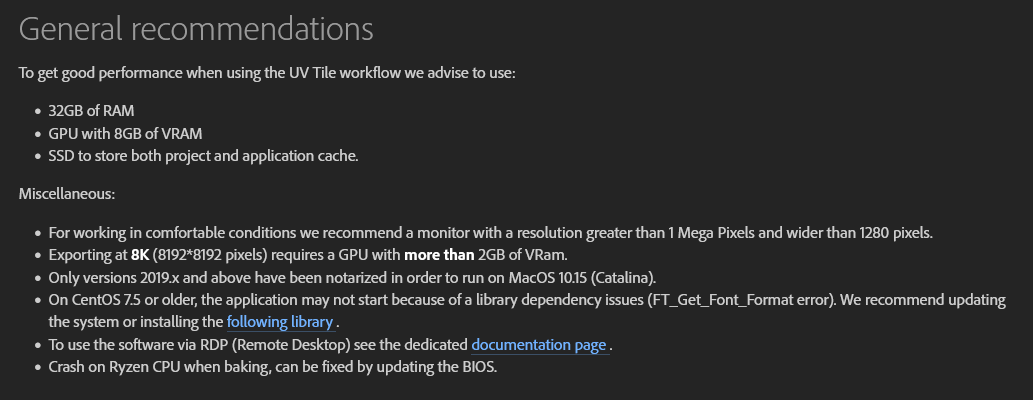

There are however certain aspects that I feel should be expanded upon.
For example, saying that any ol’ Intel i3 processor will do, even for the minimum requirements, is a bit disingenuous.
So let’s break down how Substance Painter uses the three main components of a PC and figure out what level of hardware you actually need to be able to properly use Substance Painter.
CPU (Processor) Requirements
Generally, the CPU doesn’t matter all that much for most things that you might do in Substance Painter.
As with most applications, it generally relies on high single-core performance for most of the operations within the application and might dip into using two or three cores at times, but doesn’t benefit all that much from anything beyond that.
You can generally see a steep performance drop on the single-core performance of CPUs as you add in more cores. So the sweet sport for most normal use cases when it comes to CPUs is around 16 cores.
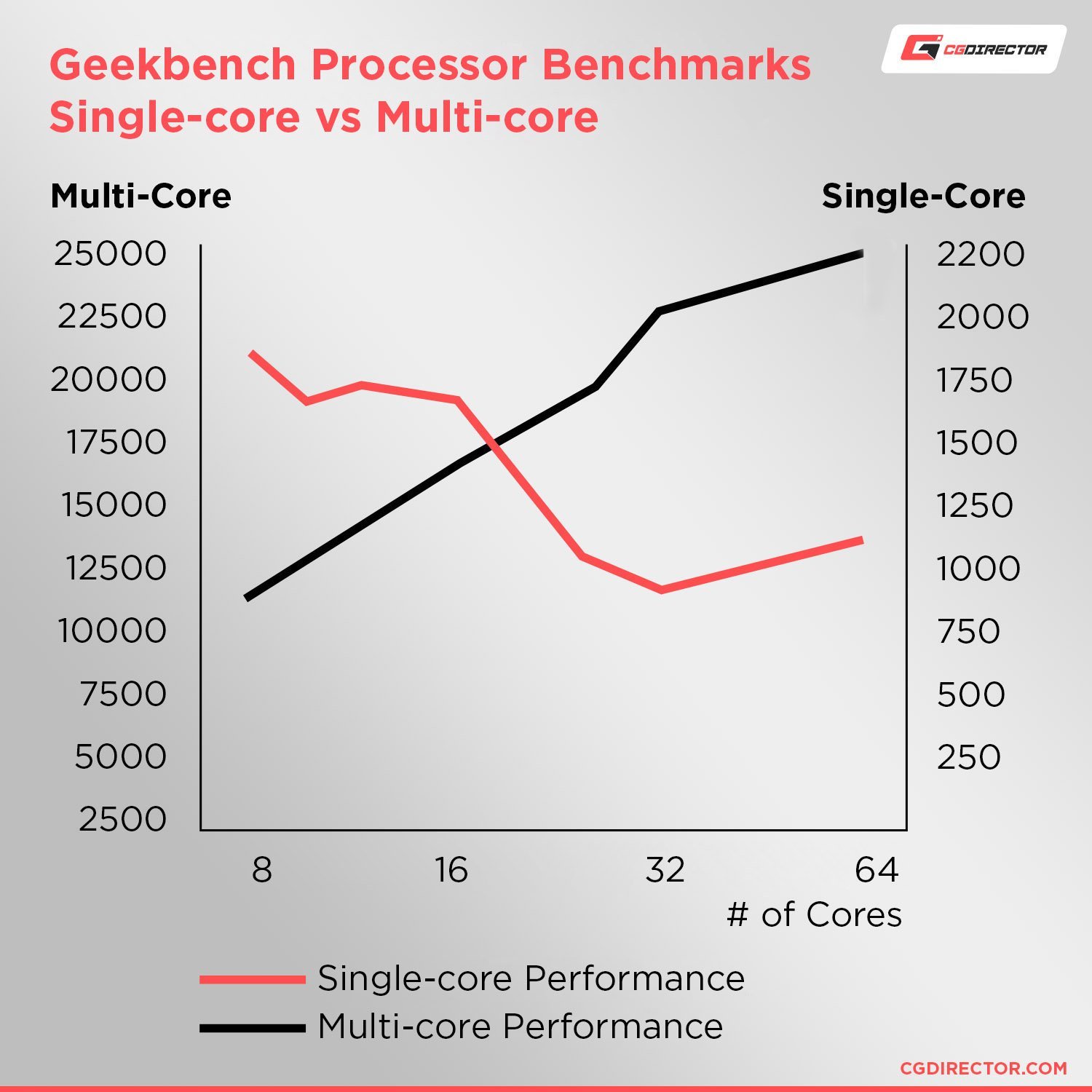
That doesn’t mean that any ol’ CPU will do though, you still need something that’s decently fast.
However, there’s a key area of Substance Painter (and other Substance products) that does use the CPU heavily: Texture Baking.
As the CPU is the main component responsible for baking down your shaders into textures, during this process, the roles switch and your CPU becomes the most critical part of the process.
So it’s important to make sure that you have an adequate CPU that’s capable of handling these processes.
I recommend you look at any CPU from either AMD or Intel with at least 6 cores/12 threads.
Though if you make heavy use of the texture baking functionality of Substance Painter, I would highly recommend that you look at CPUs with at least 8 – 12 cores plus. A 16+ core CPU is ideal if you’re working with extremely detailed models and high-resolution textures.
The Ryzen 5 5600X on AMD’s side and the Intel Core i5-12600K on Intel’s side are both good starting options.
The Ryzen 5 5800X and Intel Core i7-12700K are good options if you want the best bang for the buck without going into overkill territory.
GPU (Video Card) Requirements
GPUs are the most important of all PC components used by Substance Painter.
Pretty much everything in Substance Painter requires a good GPU to function properly.
You don’t need anything super high-end to work with Substance as long as you’re doing relatively simple/intermediate work, but if you plan on doing high-end, professional work that requires you to work with large meshes, you’re going to need a GPU with enough horsepower.
And if you plan on creating high resolution (8K+) textures, it’s crucial to make sure that you have adequate VRAM to do that; 8GBs minimum, 10+ GBs recommended.
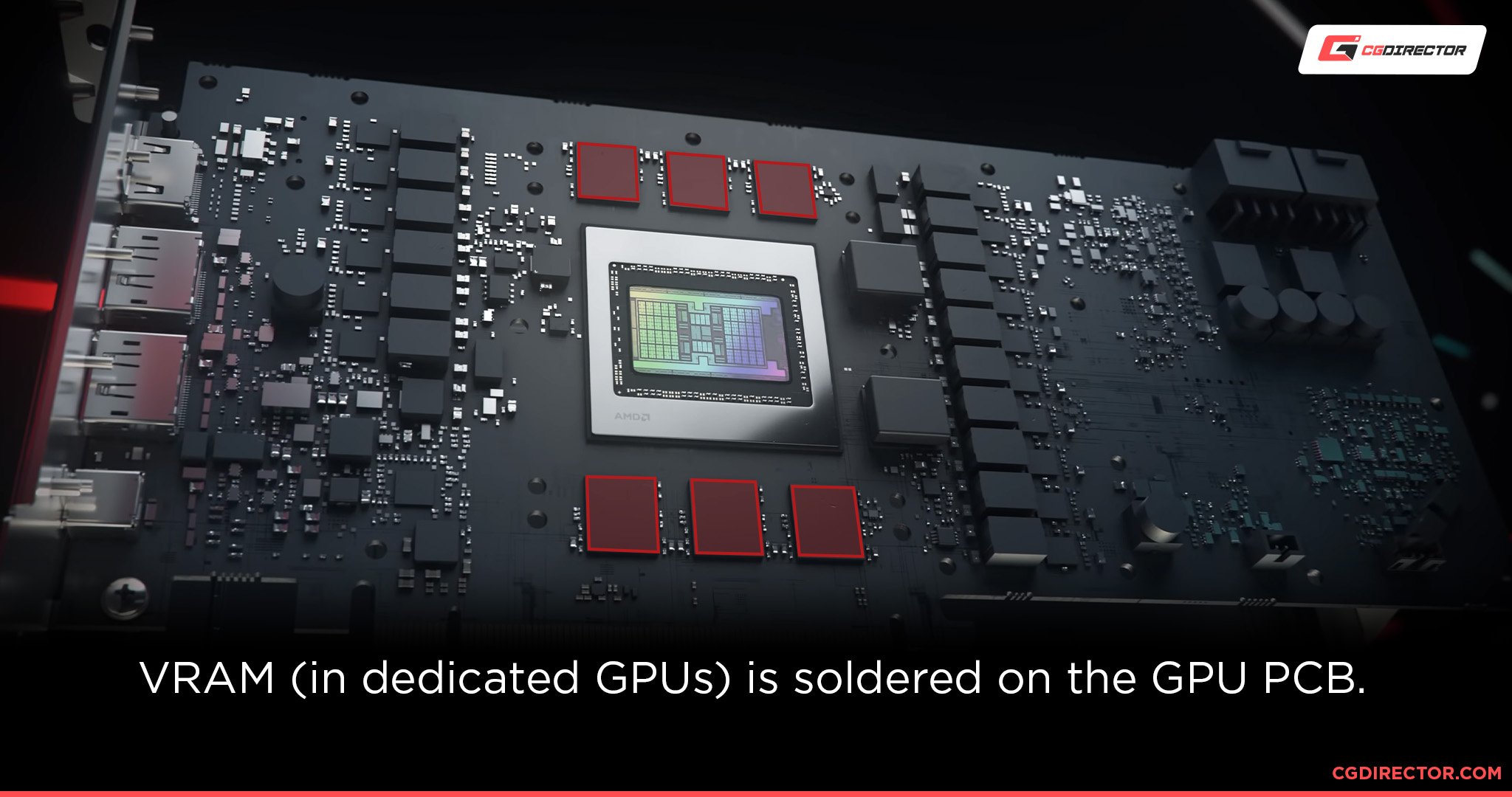
I recommend the NVIDIA RTX 3060 or AMD RX 6600 as starting options and the NVIDIA RTX 3080 and AMD RX 6800 as good options if you want even more performance without breaking the bank.
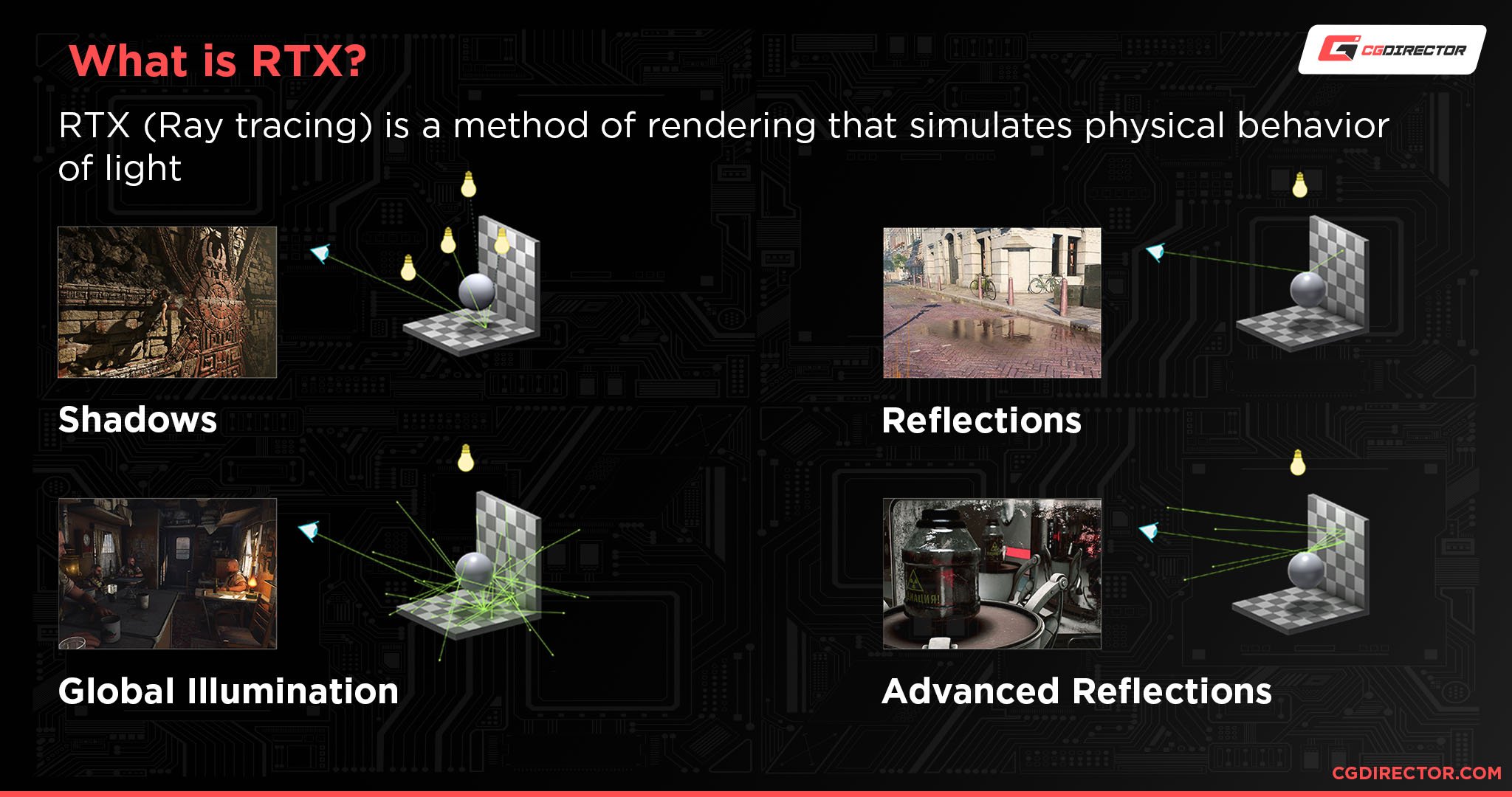
Note that if you plan on rendering using Substance Painter, AMD GPUs currently aren’t supported by iRAY, Substance Painter’s ray-traced render engine. All other functionality works as expected, however.
RAM (Memory) Requirements
As always, RAM requirements are pretty simple with these sorts of things. You should get 16GBs minimum.
Anything lower than that on a modern PC with a modern OS and applications will get eaten up fast, leaving barely anything for Substance Painter.
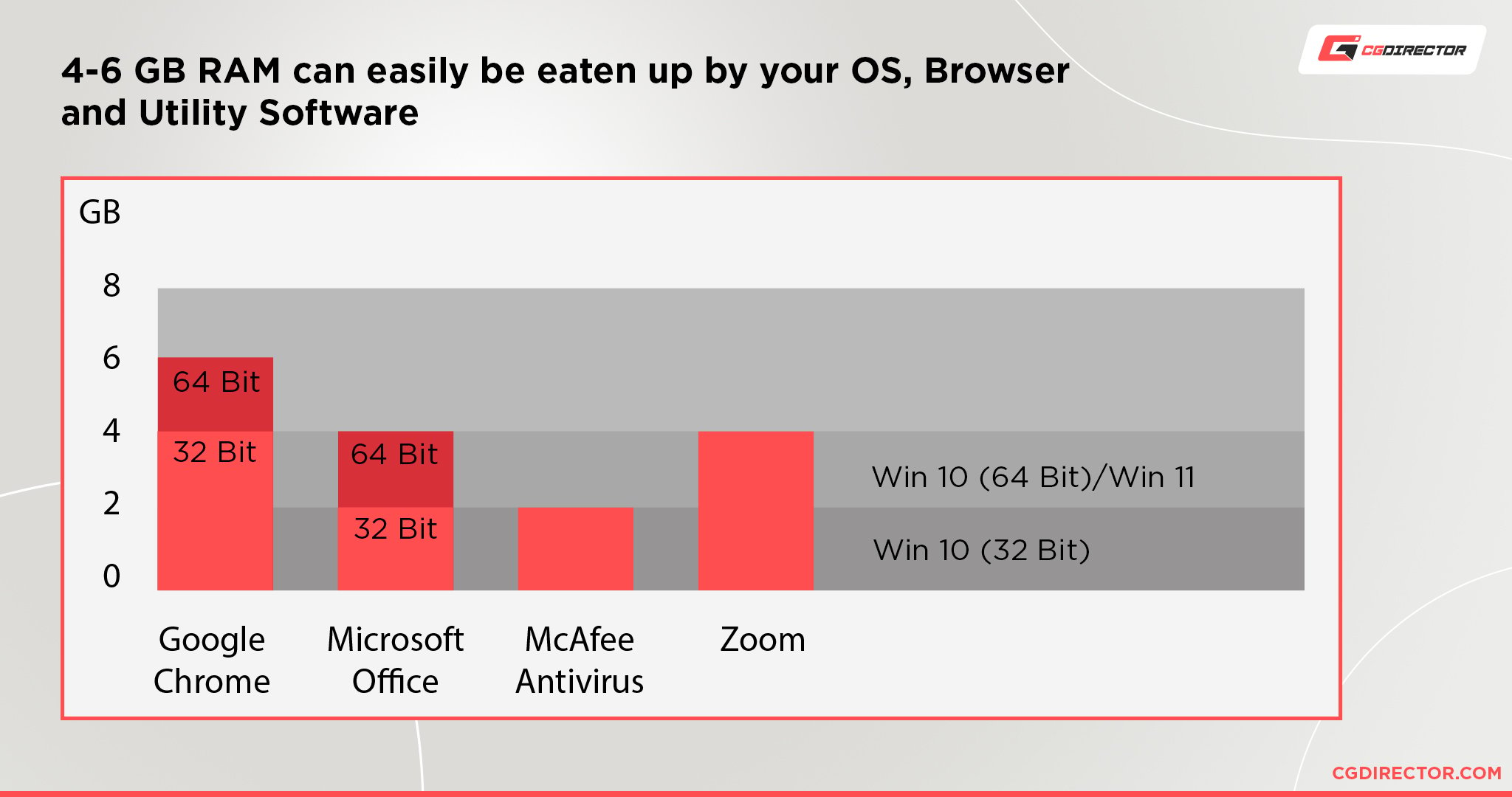
But if you’re planning on using Substance Painter in a professional manner, I would highly recommend you get at least 32GBs.
16GBs is enough for most things, but nowadays, even that is teetering on the edge of not being enough – and efficiency is key. You’ll be able to work and multitask without worrying about memory hitches.
Performance Demands of Different Applications of Substance Painter
Substance Painter is a very valuable tool in the 3D creative process, and as such, has been used in practically every 3D art area that you can think of, from movies to games, and simpler 3D use cases.
So let’s take a look at what the different use cases for Substance Painter might look like, and what type of hardware we can expect to need to use Substance Painter effectively for that use case.
Substance Painter for Low Budget/Complexity Projects
You might’ve seen stunning photorealistic texture work done in Substance Painter, but that’s not all that it’s good for.
Substance Painter’s general ease-of-use and the countless free and cheap materials available online empower just about anyone to work with it to enhance their creations without much hassle.
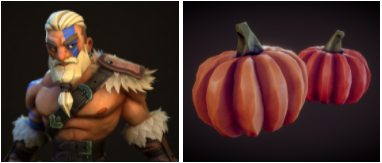
Substance Painter Results from great Artists – Credit: Philemon Belhomme, Max Ramirez
Substance Painter’s ease-of-use, community, and relatively cheap price, is a major reason why a large number of low-budget productions like mobile and indie games, indie movies, etc., have also started using it to spice up their textures.
These sorts of use cases don’t really push Substance Painter all that much for the most part as a large majority of projects in this category tend to lean more towards the NPR (Non-Photorealistic) side of things.

Examples of smart NPR Substance Painter Materials – Credit: Hamidreza Afshari
Generally, these sorts of uses have far lower hardware requirements as you’ll most likely be working with lower poly models and lower resolution textures.
Hardware Requirements: The most important hardware requirement to using Substance Painter for these sorts of simpler projects is having adequate graphics capabilities.
You can get away with a lot when it comes to the CPU side of things with Substance Painter, but its GPU requirements are far more restrictive.
Any CPU that has at least 4 cores and is clocked higher than 2.5 GHz will be enough to work with Substance Painter, though it won’t be the speediest thing around when it comes to baking and whatnot.
However, when it comes to GPUs, I’d recommend getting a GPU within the last three hardware generations (5-ish years) with a minimum of 6GBs of VRAM.
And RAM is less important here than on higher-level projects. You can generally get away with 8GBs of RAM if that’s all you can manage, but having at least 16GBs is what I’d recommend.
Substance Painter for Medium Budget/Complexity Projects
Moving up a step to medium budget & complexity projects gives Substance Painter, and you, a lot more freedom.
Used by games such as Dead by Daylight, A Plague Tale, Control, and more, Substance Painter is almost universally used by many games, movies, and show development studios around this budget range.
Substance Painter gives the production team the freedom to go with anything they desire, whether that be intricate photorealism or detailed NPR.

Dwarf Physician by Weston Reid
However, along with this freedom comes an increase in the hardware demands of Substance Painter as well.
You’ll most likely be working with far higher poly counts and textures in the 4 to 8K range, meaning that the need for a powerful GPU goes up even more, and if you’ll be baking these textures, you’re going to need more CPU horsepower as well.
Hardware Requirements: A relatively modern GPU within the last two hardware generations (3-ish years) with at least 8GBs of VRAM is a must.
And the same goes for the CPU. Something with at least 6 cores and a minimum clock speed of 3 GHz will work nicely.
Because of the larger polygon count of the models you’re working on, it might also be wise to invest in more RAM, at least 32GBs.
Substance Painter for High Budget Projects
And finally, the highest echelon of the 3D world—budget-wise anyway. The hyper-realistic blockbuster movies, games, advertisements, and more.

Truly spectacular results achieved through Substance Painter by Gal Yosef, Kubisi art
Used in productions such as The Expanse, Game of Thrones, Alita: Battle Angel, and more, Substance Painter, at this level, is used to mimic every detail of reality and create jaw-dropping textures and shaders.
As you might imagine, none of this comes cheap. Working with polygon counts in the hundreds of thousands, perhaps millions, and textures that regularly go up to and beyond 8K require you to have nothing but the latest and greatest in hardware.
Hardware Requirements: You will need the latest and greatest GPUs available, something that’s no more than a generation old (1 – 2 years), and has at the very least 16GBs of VRAM.
You won’t need as powerful of a CPU as you do with a GPU, but at this level, it’ll still be beneficial to get a CPU that has at least 8 cores and is clocked higher than 3.5 GHz.
And as for RAM, I would recommend having at least 32GBs of RAM, preferably 64GBs if you plan on working with extremely high poly models and baking them.
Our PC Build Recommendation For Substance Painter
And finally, we’ve come to the actual PC build recommendation.
This PC is designed to allow you to do practically anything that you might want to do with Substance Painter without being overkill—and also be somewhat conscious of your bank account.
It’ll be able to chew through pretty much anything you throw at it for years to come without any issues.
If you have any questions or concerns about the build, come over to our forums and we’ll clear up any issues that you might be having.
The above build will give you an idea of what constitutes an optimal allrounder build for Substance Painter.
Given your specific needs such as extensive Texture Baking, you can change the CPU to a 12900K, or change the System to a TRX40 Threadripper CPU entirely.
Other Software might require further care in adjusting this build. If you are using After Effects, for example, you might want to add as much RAM as you can afford. For High-End GPU Rendering needs, a stronger or additional GPUs might be necessary.
How to Check Your Current Specs to See if You Can Run Substance Painter
Do you already have a PC or laptop that might be able to run Substance Painter, but you’re not sure?
Well, we have an article covering just how to do that.
After you get your specs, all you have to do is compare them with the suggestions that I’ve given here and you’ll have a good idea about how well your PC might run Substance Painter.
How to Upgrade Your PC to Run Substance Painter Faster
Perhaps you already have a PC that’s capable of running Substance Painter decently enough, but maybe it could use some upgrades here and there to bring it back up to spec.

If that’s the case, I’d recommend you take a look at our article about what it takes to upgrade your PC.
Just about everything you need will be there, and if it isn’t, you can always head over to our forums and get in touch with us. We’ll help you sort out what you need.
In Summary
Hopefully, that gives you all the info you need to figure out what you need on the hardware end of things to run Substance Painter smoothly.
Substance Painter, along with Substance Designer, revolutionized how you textured your 3D creations.
Turning what was once a technical, and somewhat clunky system into a creative and fun system that allows you to create what you want much faster.
And as we’ve seen, as long as you have a relatively modern GPU, you too will be able to harness that power and create somehing amazing.
FAQ
Can Substance Painter Run On 2 – 4GB of RAM?
It might run, but it won’t be usable.
4GBs of RAM is already just barely enough for just your operating system to run these days, not to mention any other programs. There’s no point talking about 2GBs of RAM.
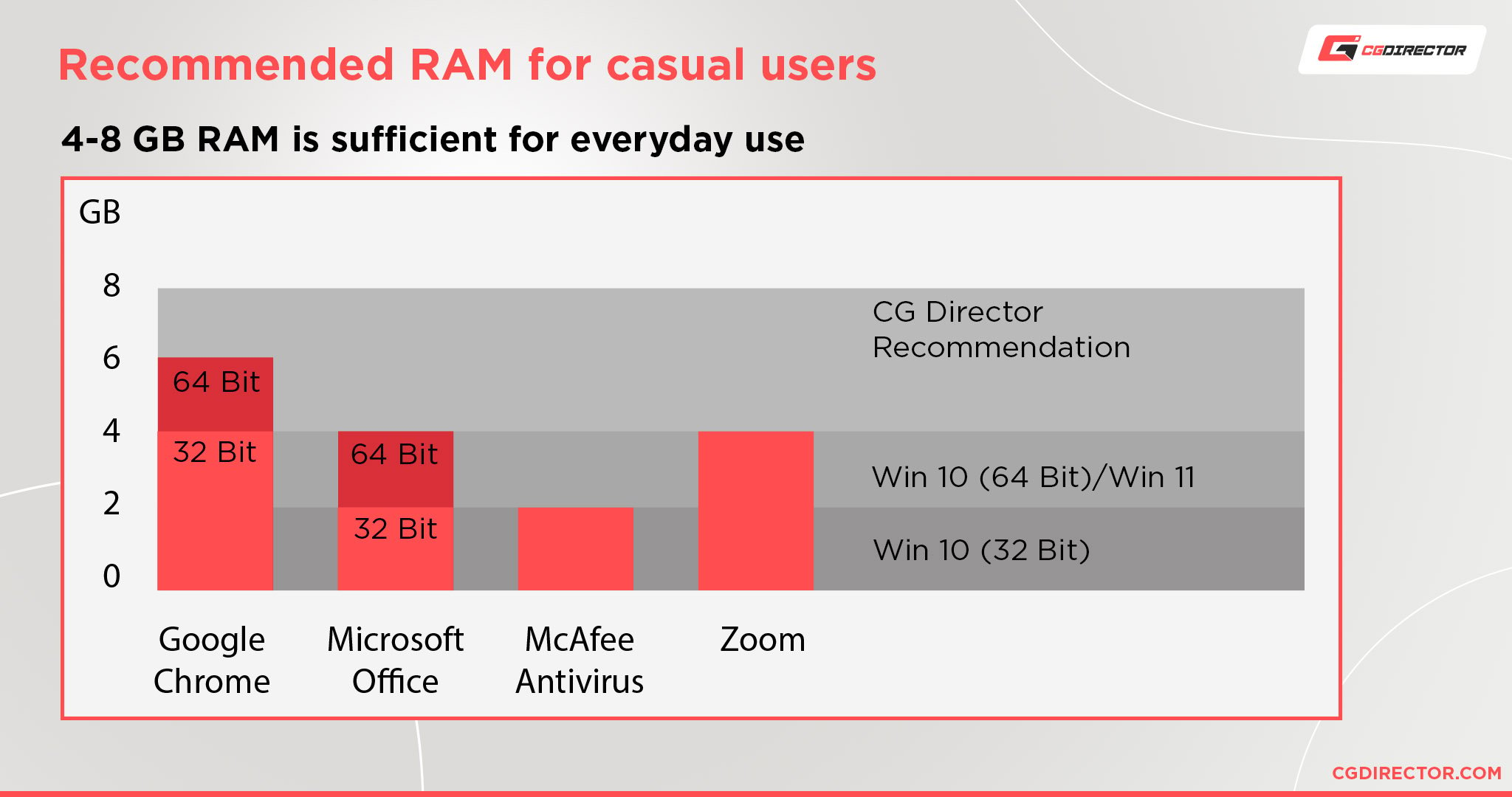
I would highly, highly recommend getting at least 8GBs of RAM if you’re planning on working with Substance Painter. It’s just going to be a royal pain to use otherwise.
Does Substance Painter Require a Good PC?
Substance Painter requires a decently good PC to work well.
You can generally cut some corners and use older hardware and still be fine for the most part, but if you want to use the full functionality of Substance Painter, you need relatively powerful hardware within the last two to three hardware generations at the very least.
Is RAM Important for Substance Painter?
It is decently important. Substance Painter isn’t that RAM-hungry, but it can still eat up a decent chunk of RAM when you’re working on extremely high poly models.
You can generally get away with 8 – 16GBs for most use cases, but if you work with ultra-high-quality models, more RAM would never hurt.
Can a Laptop Run Substance Painter?
Sure, most mid-range laptops these days can run Substance Painter just fine.
Laptops have gotten seriously good for productivity without sacrificing all that much in the way of portability as well.
Most laptops within the $750 – $1000+ range within the last two to three generations will run Substance Painter just fine for most use cases.
You won’t be creating big-budget Hollywood movie quality textures with it without any trouble, but it’ll be fine for most hobbyists to intermediate work.
Can I Run Substance Painter Without a Graphics Card?
No. It’s highly unlikely that you’d be able to run Substance Painter without a dedicated GPU.
If you have a recent APU from AMD, you might be able to run Substance Painter, but even then, the performance would be poor because integrated GPUs don’t have any VRAM, so it’ll struggle.
Does Substance Painter Use the GPU or CPU?
As with pretty much any application, it uses both. However, Substance Painter definitely has a preference for GPUs on most things.
That’s not to say that it doesn’t need a good CPU however, but for most of its functions, sans baking, GPU is king.
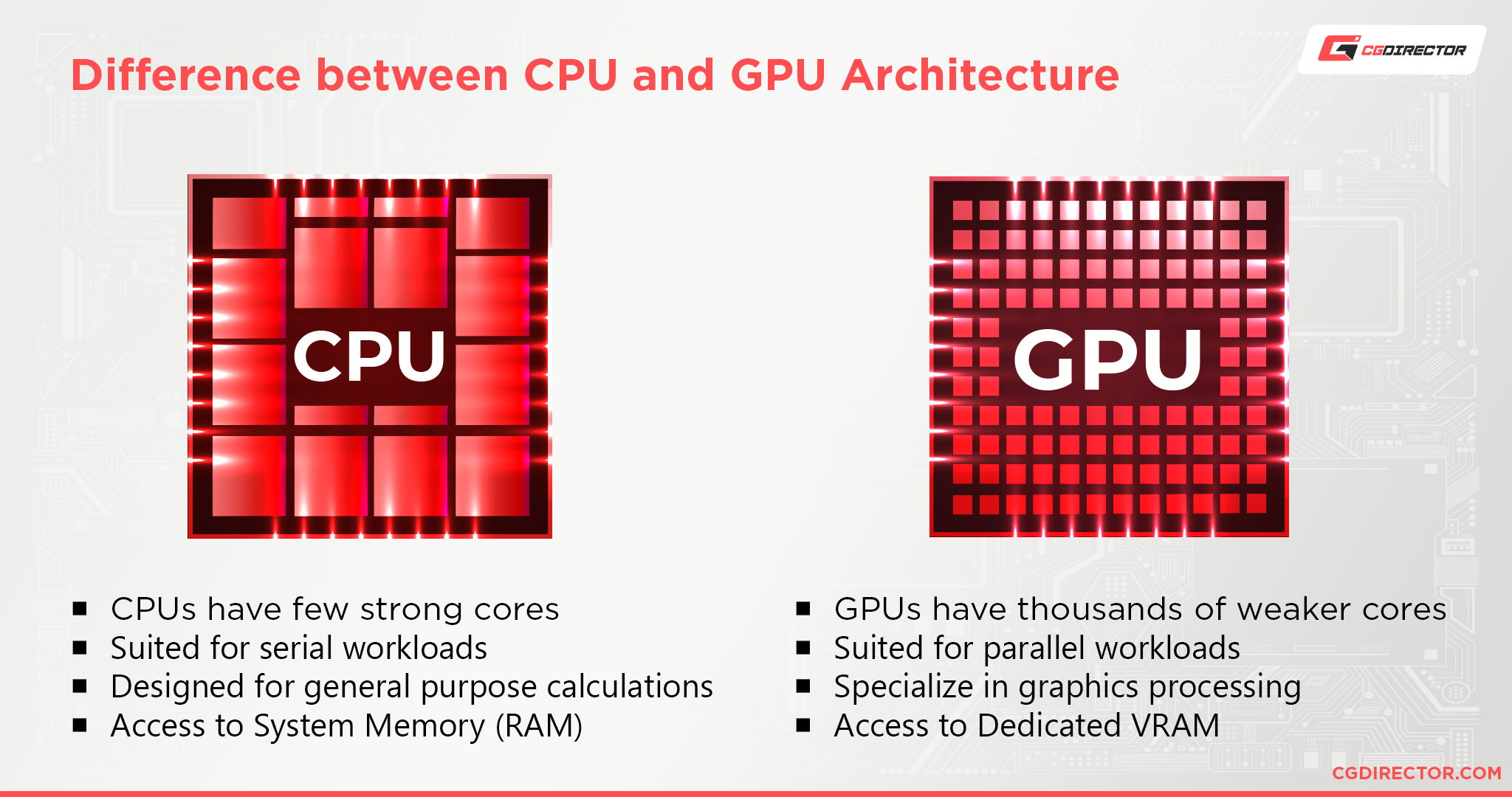
Is 4 Cores Enough for Substance Painter?
4 cores would be able to run Substance Painter for most smaller to mid-range projects.
As long as it has good single-core performance, Substance Painter is mostly alright with 4~ core CPUs.
However, Substance Painter’s baking functionality depends heavily on CPU performance and CPU core count, so your baking performance with a 4 core CPU definitely won’t be ideal if you’re working with lots of higher resolution textures.
Why Is Substance Painter So Laggy?
That’s a hard question to answer with no other information.
There could be a million and one different reasons as to why Substance Painter might be lagging for you.
You might not have the hardware to properly run Substance Painter, you might be working with too many complex models and shaders at once, it might be a driver issue, etc, etc.
The best way to get help for these sorts of issues is to write down your exact hardware specifications, write down what exactly the issue is (how it happens, when it happens, etc), and then look for help in forums such as the Allegorithmic subreddit, official forum, or our own forum.
Over to You
Did that help you understand what you need to run Substance Painter? Got any other unanswered questions? Ask us in the comments or our forum!
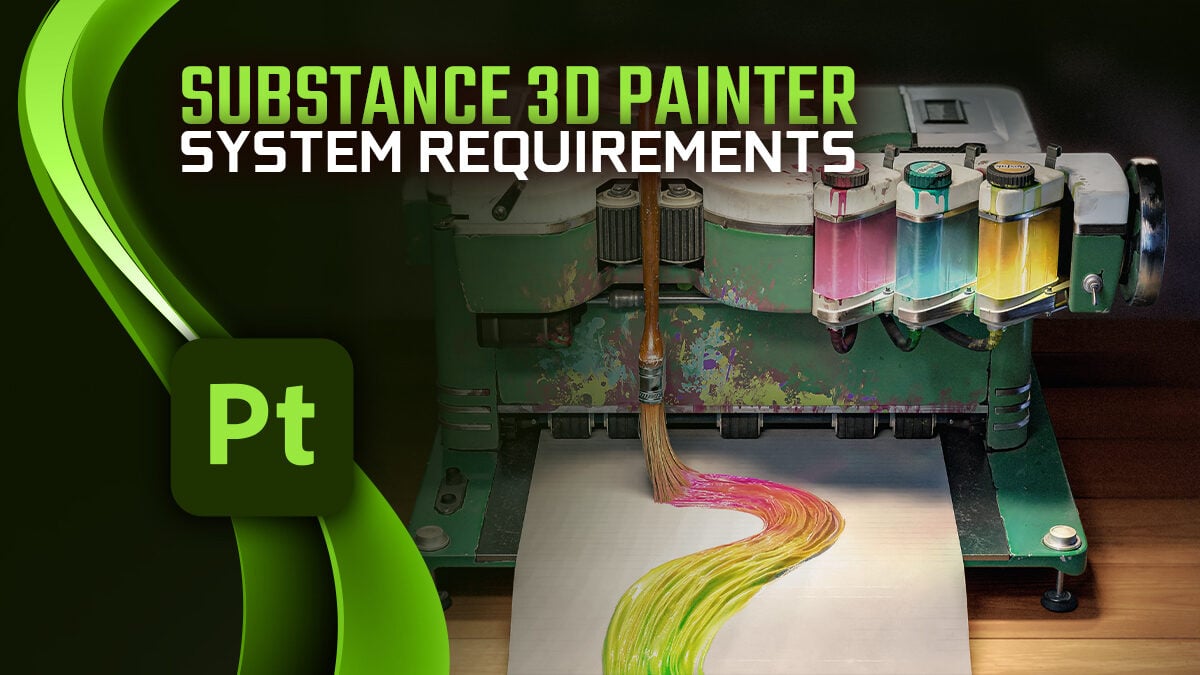
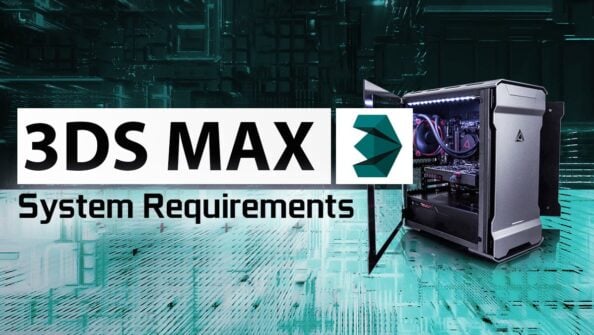
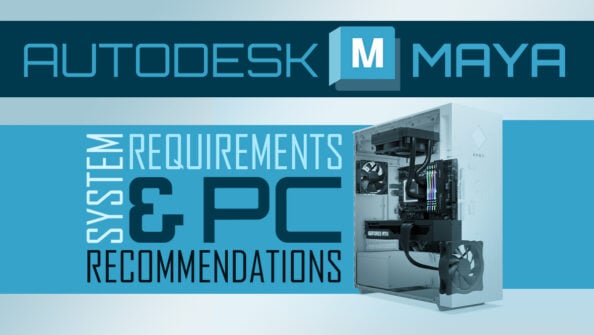
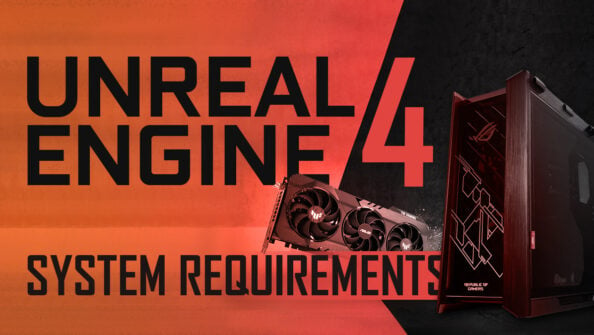
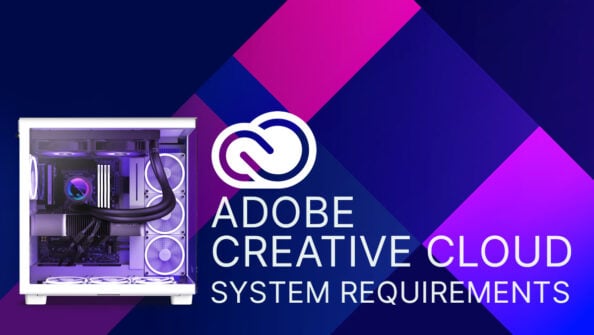

0 Comments